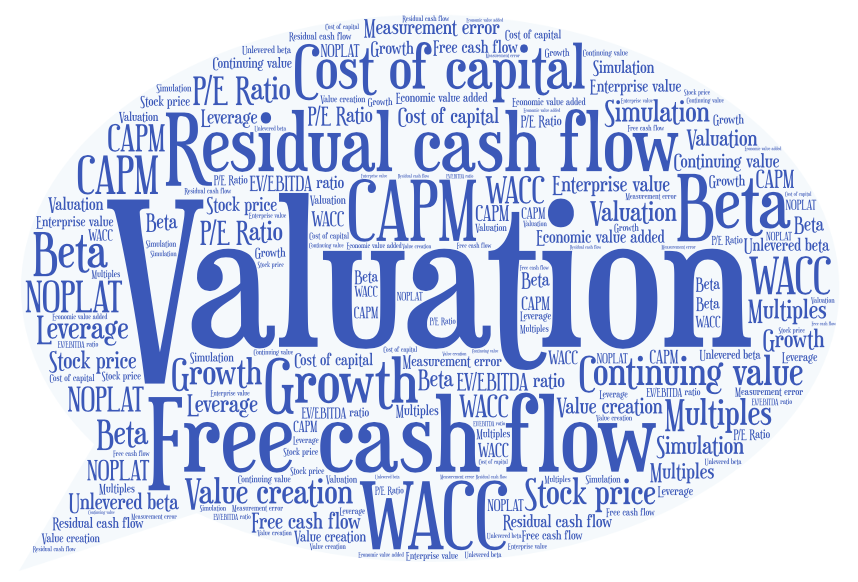Firm Valuation: Fundamentals
Section outline
-
Welcome to the fascinating world of corporate finance and valuation! The course provides you with a step-by-step guide to estimate the financial value of any firm.
The main learning goals of this module are:
- State-of-the art methods for any company valuation situation (from startups to mature firms)
- In-depth discussion of Discounted Cash Flow (DCF-WACC) and Relative Valuation (Multiples)
- Know useful shortcuts to quickly assess the value of a firm or the validity of an existing valuation.
- Focus on practical implementation with countless case studies, spreadsheet templates, and online tools
- Learn how to get from the Valuation to the actual Deal.
Activities: 6 -
In this module, we learn how to read and analyze financial statements. Most importantly, we learn how to quickly assess the financial health and performance of a company and how to interpret the most important financial ratios. Very often, a detailed financial analysis is the starting point for important corporate decisions. Financial analysis also provides very useful information for Financial Planning and Valuation.
Activities: 2 -
This module covers the basic principles of relative valuation and shows how to use so-called multiples to quickly assess the value of your firm or its equity. Relative valuation is extremely popular in the business world because it is fairly easy to use and communicate.
Activities: 2 -
Financial planning is one of the key tools of financial management. In this course, we first discuss in detail how to derive cash flows from the firm's balance sheets and income statements. Then we take a closer look at the critical issue of how to project cash flows. The result of these projections will be the firm's financial plan. We look at a comprehensive financial planning case and learn how to use Monte Carlo Simulation to transform financial plans into powerful management tools.
Activities: 2 -
In this module, we learn how financial leverage affect a firm's cost of capital and how we can actually capitalize firm cash flows. After we have discussed in detail the issues of financial planning and cash flow estimation in the course Financial Planning for Managers, this moduletakes the logical next step towards the estimation of firm value.
We present two conceptual approaches towards the estimation of firm value: the so-called DCF-WACC approach and the DCF-APV approach. We also learn how to estimate the WACC (Weighted Average Cost of Capital) in practice.
Activities: 2 -
When valuing firms, the market generally assumes a very long-term perspective. This module shows how to incorporate such a long-term perspective in our firm valuation framework. It also discusses key relations between growth, investment policy, and value creation in the long run. Finally, it presents a simplified model that allows us to assess the value of mature companies with only 5 assumptions.
It turns out that the expected cash flows that arise after the years that are typically covered by the financial plan financial plan often account for 50% or more of firm value. It is therefore crucial to understand and assess this so-called continuing value.
Activities: 2 -
Each valuation is the result of many assumptions. In this section, we learn how to deal with the fact that some of these assumptions could be affected by measurement error. We learn how to use scenario analysis, sensitivity analysis, and Monte Carlo simulations to study the relevance of measurement error and to express firm value as an interval rather than a point estimate. Properly applied, these analyses transform a valuation exercise into a very valuable management tool.
Activities: 3 -
Now we are ready to put the various building blocks of firm valuation together. This section briefly summarizes the relevant steps that bring us from a blank sheet of paper to a reliable estimate of the value of the firm (or its equity) using the discounted cash flow approach.
Activities: 3
